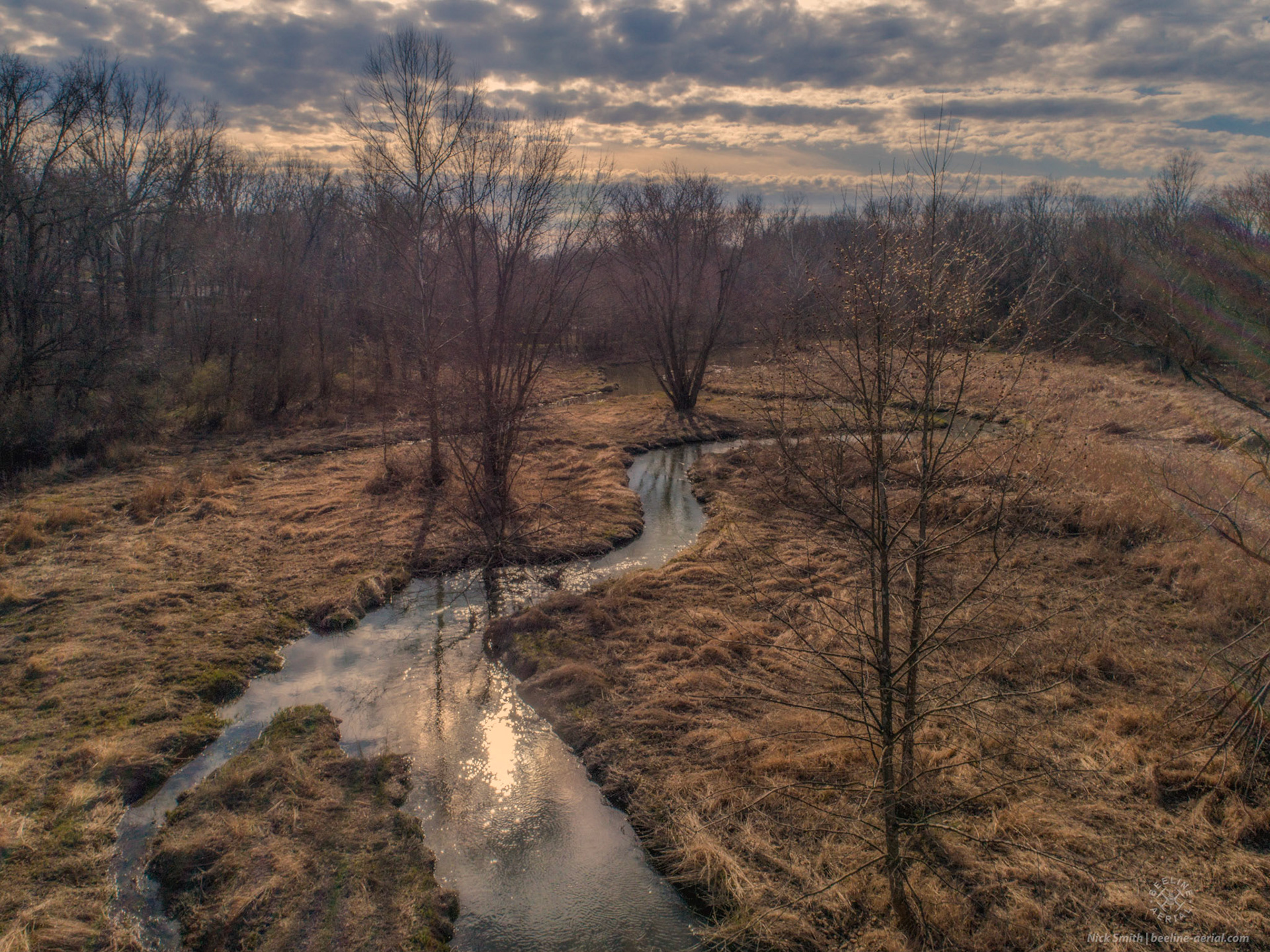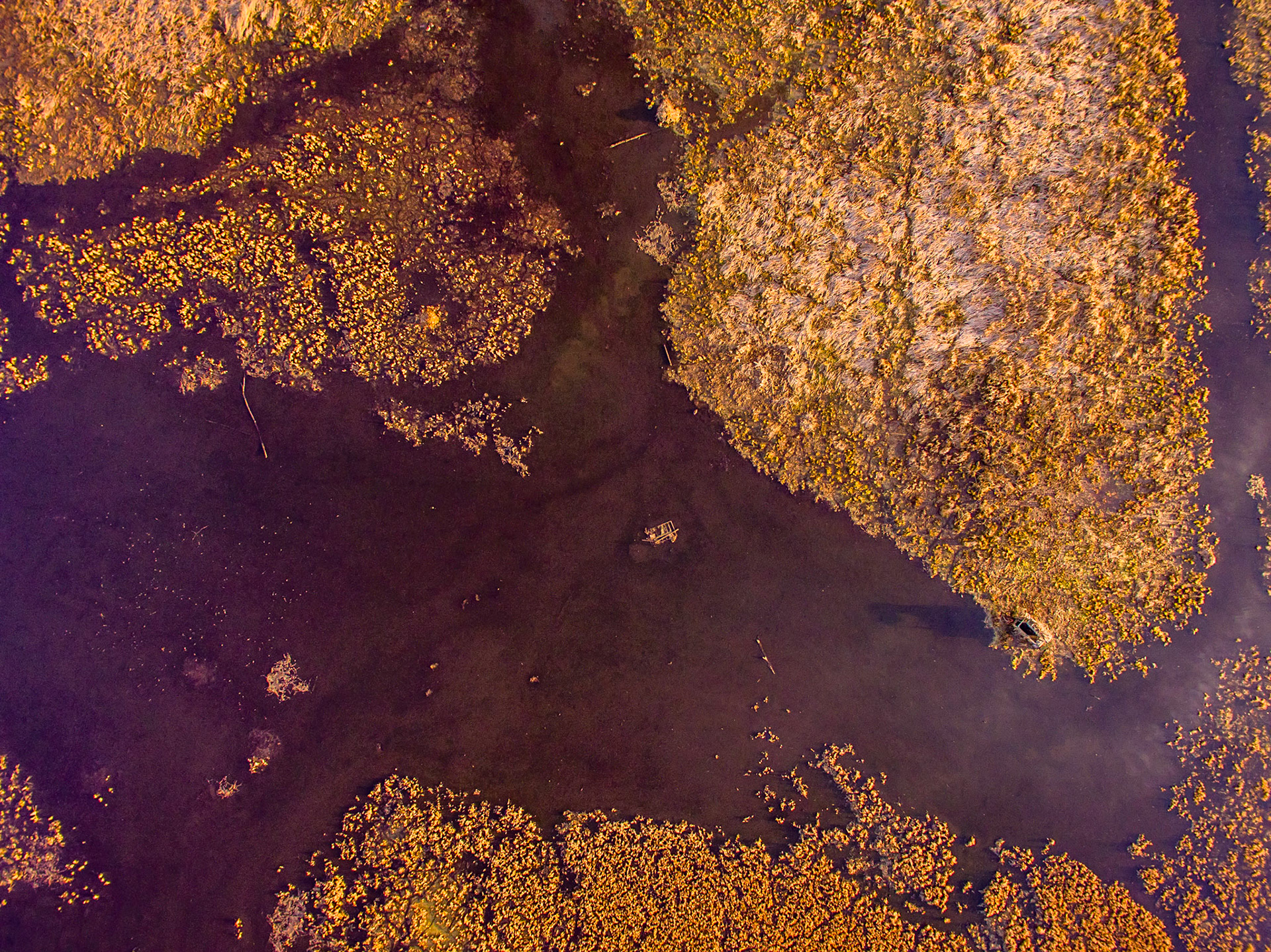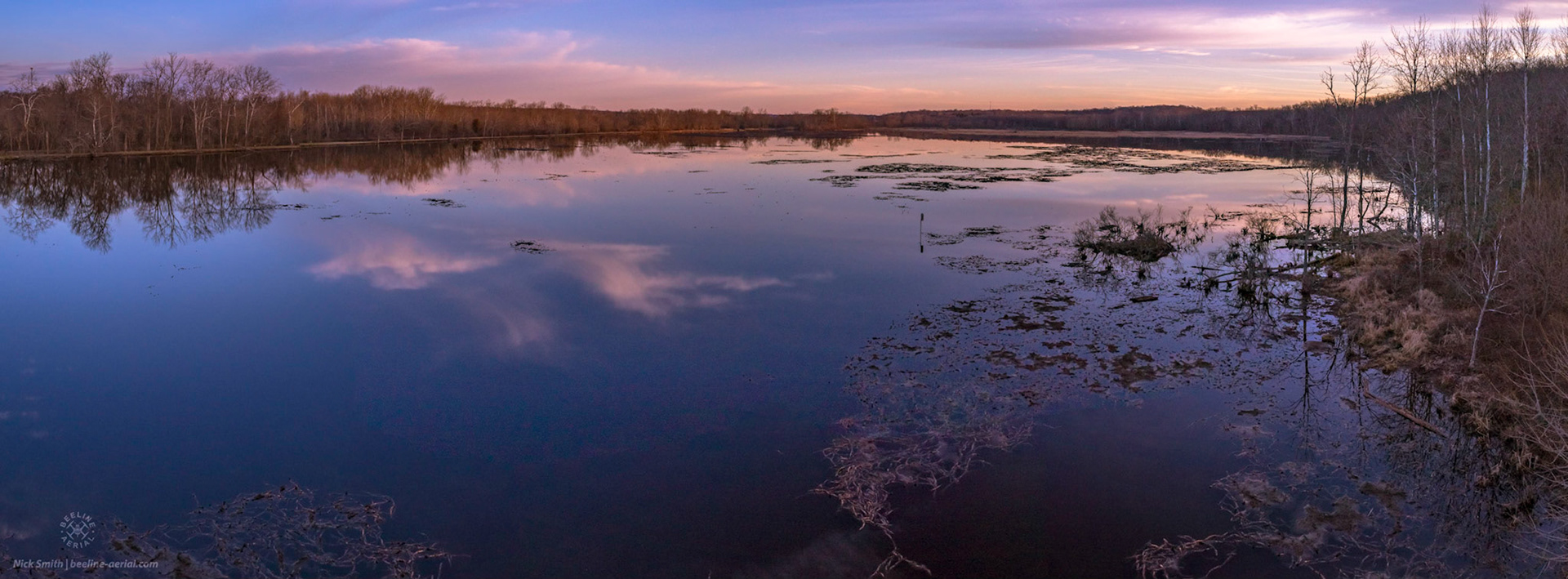



Wetland photography is a magical experience. There are so many different settings all in one place. I like to tell the story of the wetlands by capturing photos from all different heights and angles. A lot of times, this is for the same subject like a stream or group of particularly interesting plants. Having a variety of photos this way lets you portray the story that you might miss otherwise, like just above the cattails.
The other great thing about wetlands are the variety of settings. Some have multiple types at one location while others just one. These can be forested, prairie, meadow, swamp, bog, or other wetland types. When you have more than one type of wetland at the wetland complex, you can get totally different views within a matter of feet. For instance, a wetland with a meadow and forested area lets you experience both wide open areas as well as tight, squishy, wet forested areas all at once. This variety is also great for lighting. I love midday light in forested wetlands. It is filtered through the trees making for a great light show of highlights and shadows. Morning and evening light is spectacular for the more open areas.
Wetlands are also great for animal photography. You have to be patient a lot of times to see the birds, beavers, foxes, and other woodland creatures. Drone photography is not useful most of the time for this since you can’t harrass wildlife under FAA regulations and they are a little loud. Even the small ones like my Spark still sound like a small swarm of bees. I only have a 300 mm zoom lens for my Canon, so I can’t zoom in overly close either. This makes me be more creative on how I can physically get closer but not off the path or other areas. I haven’t been lucky enough to get that great shot of the animals other than far away with the drone where I have had geese fly into the area my photo making a nice V in the sky.
Camera and drone height is a very useful tool in these area. I like shots where it looks like you are peeking over things like large cattails or around trees. Low photos let you show how tall the plants are. Getting over the plants or right at the top of them about 20 feet up gives the view a bird would have sitting on top of them. Treetop gives a great view of the surrounding area, especially when coming out of a forested wetland into a meadow or swamp. “Top down” photos, where you go up and point the camera of the drone straight down, give a unique view to see all the different patterns in the area. My favorite height for these is about 200 feet. As you gain more operating skills, a drone is great around trees, especially with a drone that has avoidance sensors. I love to put the drone in “tripod mode” to so this to keep it very steady and frame the subject with a tree branch or section of the tree. All of these techniques help to tell the whole story with photography in a wetland.
Aerial drone photography has opened up a new view for us nature lovers who love to photograph wetlands and nature in general. It allows us to once again get a different perspective and capture views just out of reach. A wetland offers so many views that you can’t capture that story with just one view. Using both a drone and handheld camera help to show the whole picture of this fantastic diverse area to all.
COMMENTS
SHARE A COMMENT
Thank you for you comments about the blog post!
